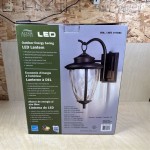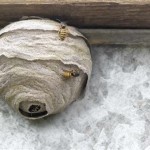How To Grow Basil Outdoors In Pots: A Comprehensive Guide
Basil, a fragrant and versatile herb, is a favorite among gardeners and cooks alike. Its leaves impart a distinctive aroma and flavor to a wide array of dishes, from Italian pasta sauces to Southeast Asian stir-fries. Growing basil outdoors in pots offers a flexible and convenient way to enjoy fresh basil, even with limited garden space. This article details the necessary steps and considerations for successfully cultivating basil in containers outdoors.
Before embarking on this horticultural endeavor, it's important to understand basil's basic requirements. Basil thrives in warm weather, requiring ample sunlight and well-draining soil. Choosing the right pot and potting mix, providing adequate watering and fertilization, and protecting the plants from pests and diseases are all crucial for optimal growth. The following sections will provide specific guidance on each of these aspects.
Selecting the Right Pot and Potting Mix
The choice of pot significantly impacts basil’s health and productivity. Consider the following factors when making your selection:
Size: The pot should be large enough to accommodate the basil plant's root system. A container that is at least 12 inches in diameter is generally recommended for a single basil plant. Larger pots, such as those 16 inches or larger, will allow for more robust growth and reduce the frequency of watering.
Material: Pots are available in a wide range of materials, including terracotta, plastic, ceramic, and metal. Terracotta pots are porous, allowing for good air circulation and drainage, which can help prevent root rot. However, they also dry out more quickly, requiring more frequent watering. Plastic pots are lightweight and retain moisture well, but they can overheat in direct sunlight. Ceramic pots offer a balance of aesthetics and functionality, while metal pots can heat up excessively and may leach metals into the soil.
Drainage: Proper drainage is essential for preventing root rot. Ensure that the pot has adequate drainage holes at the bottom to allow excess water to escape. If the pot lacks sufficient drainage, consider drilling additional holes or lining the bottom with a layer of gravel to improve drainage.
The potting mix used is as crucial as the pot itself. Garden soil is generally not suitable for container gardening because it tends to compact and drain poorly. Instead, use a high-quality potting mix specifically formulated for container plants. Look for a mix that is lightweight, well-draining, and contains organic matter, such as peat moss or compost. These additives improve drainage, aeration, and nutrient retention. Avoid potting mixes that contain excessive amounts of fertilizer, as this can burn the delicate roots of young basil plants.
Before planting, moisten the potting mix thoroughly. This will help reduce settling and ensure that the roots have access to moisture from the start. Fill the pot with potting mix, leaving about an inch of space at the top.
Planting and Initial Care
Basil can be grown from seeds or from transplants purchased at a garden center. Starting from seeds allows for greater control over the variety and maturity of the plants, while using transplants provides a head start and quicker harvest. Regardless of the method chosen, it is essential to wait until the risk of frost has passed before planting basil outdoors.
Starting from Seeds: Sow basil seeds indoors 6-8 weeks before the last expected frost. Use seed-starting trays or small pots filled with seed-starting mix. Sow seeds thinly, about ¼ inch deep, and keep the soil consistently moist but not soggy. Provide adequate light, either from a sunny window or a grow light. Once the seedlings have developed several sets of true leaves, they can be transplanted into individual pots or directly into the outdoor container.
Using Transplants: When selecting transplants, choose plants that are healthy, vigorous, and free from pests and diseases. Avoid plants that are root-bound or have yellowing leaves. Gently remove the transplant from its container and loosen the roots before planting. Dig a hole in the potting mix large enough to accommodate the root ball, and plant the basil at the same depth as it was in its original container. Water thoroughly after planting.
After planting, place the pot in a location that receives at least 6-8 hours of direct sunlight per day. Basil requires ample sunlight to thrive and produce flavorful leaves. Protect the plants from strong winds, which can damage the delicate foliage. Water regularly, keeping the soil consistently moist but not waterlogged. Allow the top inch of soil to dry out slightly between waterings. Avoid overhead watering, as this can promote fungal diseases. Instead, water at the base of the plant.
Fertilize basil plants every 2-3 weeks with a balanced liquid fertilizer, diluted according to the manufacturer's instructions. Over-fertilizing can lead to excessive leaf growth and reduced flavor. Alternatively, incorporate a slow-release fertilizer into the potting mix at planting time. This will provide a steady supply of nutrients throughout the growing season.
Monitor the plants regularly for signs of pests and diseases. Aphids, spider mites, and whiteflies are common pests of basil. Treat infestations promptly with insecticidal soap or neem oil. Fungal diseases, such as downy mildew and fusarium wilt, can also affect basil. To prevent these diseases, provide good air circulation, avoid overhead watering, and remove any infected leaves promptly.
Ongoing Maintenance and Harvesting
Regular maintenance is crucial for maintaining the health and productivity of basil plants grown in pots. This includes pruning, watering, fertilizing, and pest and disease control.
Pruning: Pinch off the flower buds as soon as they appear. Allowing basil to flower will cause the plant to stop producing leaves and become bitter. Regular pruning encourages bushier growth and more abundant leaf production. To prune, pinch off the top set of leaves just above a leaf node. This will encourage the plant to branch out and produce more stems.
Watering: Basil requires consistent moisture, but it is important to avoid overwatering. Check the soil moisture regularly, and water when the top inch of soil feels dry to the touch. Water deeply, ensuring that the water reaches the roots. During hot, dry weather, basil plants may need to be watered daily. In cooler weather, watering can be reduced.
Fertilizing: Continue to fertilize basil plants every 2-3 weeks with a balanced liquid fertilizer, or incorporate a slow-release fertilizer into the potting mix. Adjust the amount of fertilizer based on the plant's growth rate and appearance. If the leaves are pale green or yellow, the plant may need more nitrogen. If the leaves are dark green and the plant is growing vigorously, reduce the amount of fertilizer.
Pest and Disease Control: Continue to monitor the plants regularly for signs of pests and diseases. Treat infestations promptly with appropriate measures. Remove any infected leaves or stems to prevent the spread of disease. Consider using organic pest and disease control methods whenever possible. Avoid using harsh chemicals, which can harm beneficial insects and pollute the environment.
Harvest basil leaves regularly throughout the growing season. The more you harvest, the more the plant will produce. To harvest, cut the leaves just above a leaf node. This will encourage the plant to branch out and produce more stems. Harvest leaves in the morning, after the dew has dried but before the sun is too hot. This is when the leaves contain the most essential oils and have the best flavor. Use the fresh leaves immediately, or store them in the refrigerator for a few days. Basil leaves can also be dried or frozen for later use.
As the weather cools in the fall, basil plants will begin to decline. If you want to extend the growing season, you can bring the pots indoors and place them in a sunny location. Basil plants can also be propagated from stem cuttings. To propagate basil, take a 4-6 inch cutting from a healthy stem, remove the lower leaves, and place the cutting in water. Roots will typically form within a few weeks. Once the roots are well-developed, the cutting can be planted in a pot of potting mix.
Choosing the Right Basil Variety
There are numerous basil varieties, each offering unique flavors and characteristics. Selecting the right variety is crucial for achieving the desired culinary or ornamental outcome. Here are some popular choices:
Sweet Basil (Ocimum basilicum): The most common and widely used variety, known for its classic Italian flavor. Its large, glossy green leaves are ideal for pesto, tomato sauces, and salads.
Genovese Basil: A specific type of sweet basil renowned for its intensely aromatic leaves and slightly spicy flavor. It's considered the quintessential basil for authentic pesto.
Thai Basil (Ocimum basilicum var. thyrsiflora): Features a distinct anise or licorice flavor and aroma. Its pointed, dark green leaves and purple stems add a decorative touch to the garden. It's commonly used in Southeast Asian cuisine, particularly in stir-fries and soups.
Lemon Basil (Ocimum × citriodorum): Imparts a refreshing citrusy flavor to dishes. Its narrow, light green leaves are often used in salads, seafood preparations, and teas.
Purple Basil (Ocimum basilicum 'Dark Opal'): Adds a visually striking element to the garden with its dark purple leaves. Its flavor is similar to sweet basil but with a slightly more intense, clove-like note. It can be used in salads, vinegars, and as a garnish.
Globe Basil (Ocimum basilicum 'Minimum'): A compact and bushy variety that forms a neat, globe-shaped plant. Its small, flavorful leaves are ideal for small containers and culinary uses where a milder basil flavor is desired.
When choosing a basil variety, consider your culinary preferences, growing conditions, and aesthetic goals. Experimenting with different varieties can add diversity and interest to your herb garden.
By following these guidelines, anyone can successfully grow basil outdoors in pots. This rewarding experience provides a continuous supply of fresh, flavorful basil, enhancing culinary creations and adding beauty to outdoor spaces.

Growing Basil In Containers

Growing Basil Herbs Planting Care Tips Bonnie Plants

How To Grow Basil The Home Depot

Can Basil Survive The Cold Winter Months Happysprout

The 7 Best Herbs For Container Gardening

8 Tips To Grow Big Bushy Basil Farmers Almanac Plan Your Day Life

How To Grow Basil In Pots

How To Grow Basil Up North Gardening Tips Advice

Growing Basil From Seed A Step By Guide

How To Grow Basil Lawn Com Au
Related Posts







